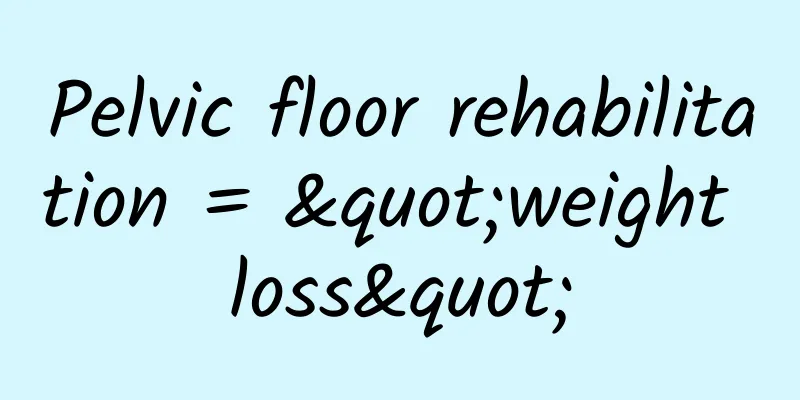Pelvic floor rehabilitation = "weight loss"

|
Female pelvic floor: It is a multi-layered muscle and fascia that closes the pelvic outlet and supports the pelvic organs, with the urethra, vagina and rectum running through it. The main bony landmarks of the pelvis are the pubic bone, ischial spine, and sacrum. They are important organs that support the trunk and protect the pelvic organs, and they are also the bony birth canal that the fetus must pass through when it is delivered. The female pelvic floor is not supported by bones, and is completely closed by muscle groups. The urethra, bladder, vagina, uterus, rectum and other organs are tightly closed to maintain their normal position so that they can perform their functions. The pelvic floor muscles control important physiological functions such as urination and defecation. In other words, if you don’t repair your pelvis, you will face a big butt, a big belly, a pot waist, elephant legs...that is, "obesity." The main manifestations of pelvic floor dysfunction Pelvic floor dysfunction (PFDs) is a common and highly prevalent disease among women, and has become one of the major chronic diseases that threaten women’s health and quality of life. It mainly includes urinary incontinence, pelvic organ prolapse, defecation disorder, sexual dysfunction, chronic pelvic pain, etc. Pelvic floor rehabilitation treatment The treatment of pelvic floor dysfunction is divided into surgical treatment and non-surgical treatment. 1. Non-surgical treatment mainly refers to pelvic floor muscle training, biofeedback therapy and electrical stimulation therapy. These methods can effectively correct the pelvic floor muscles and nerves in the long term. 2. Performing pelvic floor muscle exercises 42 days after delivery can reduce the occurrence of pelvic organ prolapse and improve the quality of sexual life of the mother. 3. Pelvic floor treatment can relieve stress urinary incontinence by more than 50% and reduce body weight by about 10%. Pelvic floor muscle training (PFMT) Also known as Kegel exercise, it refers to the patient's conscious and autonomous contraction training of the pelvic floor muscles, mainly the pubococcygeus muscle group, to enhance the resistance of the urethra and thus enhance the ability to control urine. The main content of PFMT is to repeatedly perform anal tightening training, tightening for no less than 3 seconds each time, and then relaxing, doing it continuously for 15 to 30 minutes as a set of exercises, and do 2 to 3 sets a day. |
<<: What are the characteristics of low-carbon life? What are the ways to travel with low carbon?
>>: Is it a disease if you can’t tell the directions?
Recommend
If your arm is blue after having your blood drawn as if you were beaten, it’s probably because you pressed the wrong button!
I believe you must have had such an experience of...
What does the uterine appendage examination include?
In fact, many female friends nowadays do not know...
Leucorrhea before menstruation
Normal leucorrhea is milky white or colorless and...
Can I use cupping during pregnancy?
Cupping is an important medical technique in trad...
Why is there such a big difference in the severity of positive symptoms before and after the relaxation? An important factor has been overlooked!
Recently, there has been a heated discussion onli...
Pelvic floor exercises
Contracting the pelvis is very helpful for women ...
What should I do if I have amenorrhea after taking too many contraceptive pills?
All medicines are toxic to some extent. Long-term...
Ningxia Association for Science and Technology's tips for fighting the epidemic: How to properly disinfect at home
Your browser does not support the video tag...
Ovarian cystadenocarcinoma
Ovarian cystadenoma, translated into English as c...
How to care for diarrhea after abortion
Abortion is actually a relatively common gynecolo...
Do I need to do color Doppler ultrasound for irregular menstruation?
Irregular menstruation is a common complication a...
Prosper Insights: 23% of American consumers aged 18 and above will consider buying WP devices in the next three months when purchasing mobile phones
WP platform has become the most popular platform ...
Is it okay for women to always drink coffee?
As one of the three major beverages in the world,...
Do you need to sweat during miscarriage?
Everyone knows that many pregnant women use sweat...









